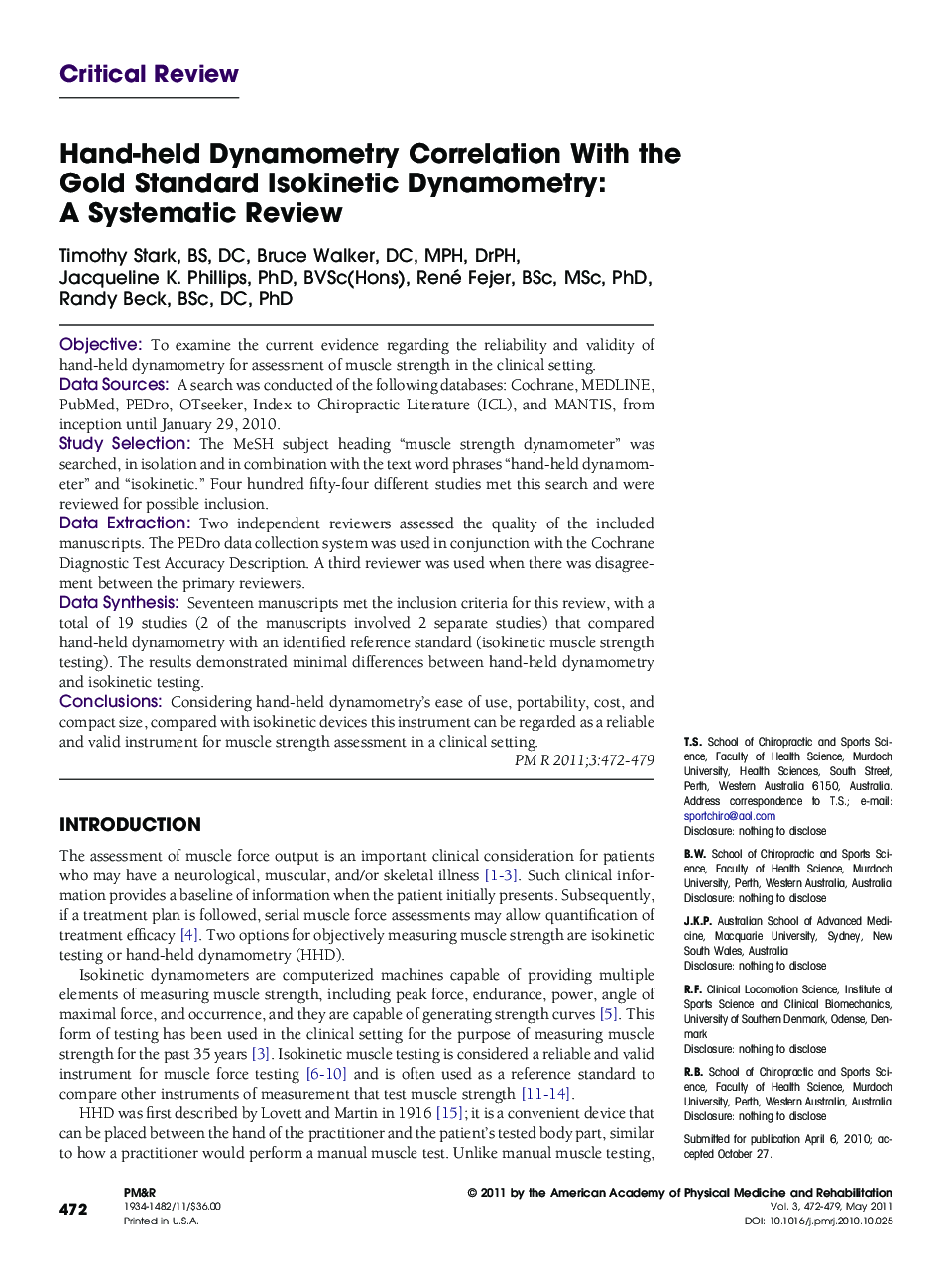| Article ID | Journal | Published Year | Pages | File Type |
|---|---|---|---|---|
| 2717369 | PM&R | 2011 | 8 Pages |
ObjectiveTo examine the current evidence regarding the reliability and validity of hand-held dynamometry for assessment of muscle strength in the clinical setting.Data SourcesA search was conducted of the following databases: Cochrane, MEDLINE, PubMed, PEDro, OTseeker, Index to Chiropractic Literature (ICL), and MANTIS, from inception until January 29, 2010.Study SelectionThe MeSH subject heading “muscle strength dynamometer” was searched, in isolation and in combination with the text word phrases “hand-held dynamometer” and “isokinetic.” Four hundred fifty-four different studies met this search and were reviewed for possible inclusion.Data ExtractionTwo independent reviewers assessed the quality of the included manuscripts. The PEDro data collection system was used in conjunction with the Cochrane Diagnostic Test Accuracy Description. A third reviewer was used when there was disagreement between the primary reviewers.Data SynthesisSeventeen manuscripts met the inclusion criteria for this review, with a total of 19 studies (2 of the manuscripts involved 2 separate studies) that compared hand-held dynamometry with an identified reference standard (isokinetic muscle strength testing). The results demonstrated minimal differences between hand-held dynamometry and isokinetic testing.ConclusionsConsidering hand-held dynamometry's ease of use, portability, cost, and compact size, compared with isokinetic devices this instrument can be regarded as a reliable and valid instrument for muscle strength assessment in a clinical setting.
